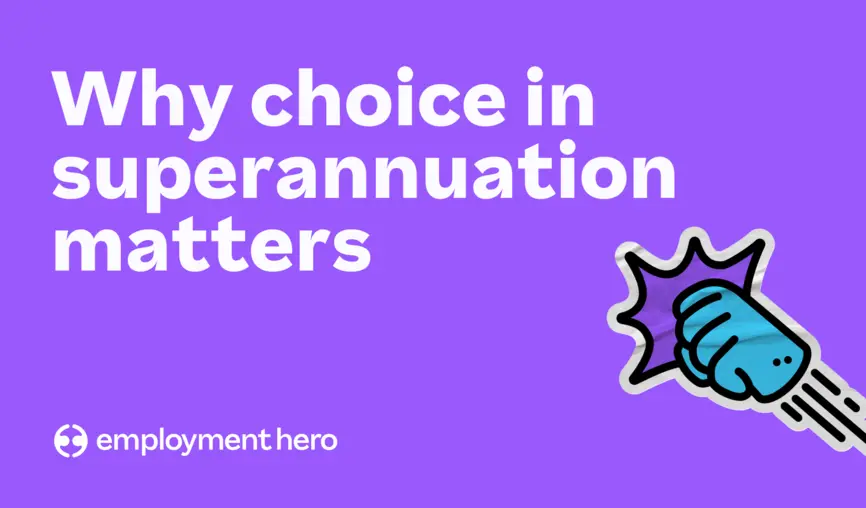7 Signs Of A Toxic Work Environment and Culture
In today’s highly competitive market, employees won’t hesitate to jump ship when faced with an unhealthy working environment. Make sure that your culture does not give them the reason to leave.

A recent article by the Harvard Business Review — ‘Creating the Best Workplace on Earth’, described the key ingredients for superior organisational health.
In a nutshell, it’s a corporate culture that celebrates differences, allows for information to flow freely, provides meaningful work and values employees. Despite this, we still often hear just one word to describe organisational cultures, and that word is: toxic.
“People don’t leave jobs. They leave toxic work cultures.” – Dr Amina Aitsi-Selmi
Prolonged exposure to a toxic work environment can foster not only lacklustre performance but also be the reason for your business’s undoing. Learning how to manage toxic staff effectively is crucial to maintaining a positive workplace environment. Check out this guide on how to manage toxic staff in the workplace.
In today’s highly competitive market, employees won’t hesitate to jump ship when faced with an unhealthy working environment. The worst part is, it’s usually your star performers who will opt to leave first.
Too many skilled and experienced people choose to leave their jobs not because of the role itself but because they can no longer bear the heaviness of toxic workplaces.
What is ‘workplace culture’?
Source: McKinsey
What often separates the highest-performing businesses from their competitors is culture. Workplace culture dictates decision-making processes, how employees behave and how your people interact with one another.
In essence, workplace culture is like the roots of a tree or the glue which binds everything together. It fosters a sense of belonging, shared purpose and meaning.
Corporate culture can form around shared company values, goals and expectations. On a physical level, it’s everything from the work environment, the dress code and even the type of technology you choose to use.
In contrast, the anti-work movement has been gaining traction, highlighting the growing discontent among employees. Learn more about what the anti-work movement is and why employers should be aware of it.
What are the signs of toxic work culture?
Toxic work environments spell bad news for employee performance and morale, yet there’s still an alarming number of cases every year.
A study by Beyond Blue into the ‘State of Workplace Mental Health in Australia’ found that:
“One in five Australians have taken time off work in the past 12 months because they felt stressed, anxious, depressed or mentally unhealthy.”
– Beyond Blue
In some cases, toxic work culture is easy to identify and so, easy to remedy. However, others can be more obscure and difficult to unearth. Company culture continuously evolves, so it’s essential for leaders to keep an eye on any changes and fine-tune where necessary.
Here at Employment Hero, we aim to help you build a healthy, happy and prosperous organisation. That’s why we’ve listed seven common red flags to look out for and how they can be detrimental to your culture.
To get the most of your employees, be sure to check out our employee engagement guide.
1. Poor leadership and management
Whenever someone in a leadership position displays poor management skills like shutting down, humiliating or dismissing anyone who speaks out of turn, you’ve got a highly toxic work environment. This kind of toxic environment thrives off fear and intimidation.
The worst part is people are often willing to step over others just to stay on the right side of the boss.
An unpleasant leader contributes to not only an unhealthy workplace but also models and endorses their ‘bad’ behaviours to others. In short, if a manager uses threatening language to get work done, it shouldn’t be a surprise that your team leaders and members start doing the same.
When it comes to the level of communication and interaction between employees and managers, it’s often a one-way street from the top-down. These kinds of hierarchical structures result in poor communication and provide no room for employees to contribute their thoughts, feelings, opinions or ideas, stifling innovation and creativity.
Fostering happiness in the workplace can significantly improve morale and productivity. Here are 11 ways to foster happiness in the workplace.
2. Trust is limited
Trust is one of the core foundations of a successful organisation. But in a toxic work environment, trust is perceived as something that needs to be earned rather than provided.
We’re talking managers checking, double-checking and triple-checking everything regardless of a person’s previous experience or performance.
Earning a manager’s trust shouldn’t have to be an uphill battle for employees. It’s important to remember that holding on tightly to control will eventually cause you to lose it.
Micromanagement is an employee’s worst nightmare and for good reasons.
3. Workplace morale is at an all-time low
Businesses with high workplace morale are more productive, drive more significant results and experience better employee retention. Not to mention, employees who are valued and appreciated by their organisation serve as strong brand advocates. High morale can also attract top talent, giving you that distinctive edge over competitors.
Unfortunately, the same cannot be said for low workplace morale. If you notice your entire office seeming burned out and deflated, then a toxic culture might be to blame. We’re talking more than the usual Mondayitis or occasional bad day.
Low morale is a case of consistent low energy and engagement that leads to restless and disheartened employees.
Unfortunately, low workplace morale can rub off on others. Meaning if only a handful of people are unhappy, you’ll soon find the whole office leaning that way. The stats tend to back this claim, with 93% of workers saying they’re less productive when working with people who have poor attitudes.
When employees experience a low sense of morale, they’re also less motivated to help their organisation succeed.
4. Employees have a pervasive fear of failure
Mistakes happen, we’re only human. Nobody goes out of their way to mess up at work. Yet 56% of employees believe their mistakes are held against them at work. This often comes down to toxic workplace culture that disapproves and punishes perceived failures.
A lack of psychological safety is one of the top indicators of an unhealthy working environment. For employees, having the ability to take risks and make mistakes without living in fear of judgement or punishment is crucial in building a successful company.
A study by Google’s Project Aristotle found that high-performing company cultures are those that foster psychological safety, and it’s easy to understand why. The best ideas and designs are often born out of diverse thoughts and opinions.
But if people feel scared to step out of their comfort zones, then you limit your company’s ability to innovate.
To understand your employees better in this area, use our psychological safety survey template.
5. Excessive absenteeism and high turnover
For any business, the biggest concern should be when their most skilled and passionate employees decide to walk. Employee absenteeism and high employee turnover is the clearest indication of toxic workplace culture.
Yes, of course, people are entitled to seek new or different employment opportunities. But if your business is consistently hiring people all year round only for them to leave after a few short months, it’s time to step back and see what’s going wrong.
When the office becomes a revolving door, it’s often down to a lack of opportunities for growth, inadequate training, low engagement and poor management.
How you treat your employees, the benefits you provide them and the environment they work in can have a significant impact on your level of productivity and retention.
6. Bullying and gossip is tolerated
It’s okay to have workplace friends; people naturally gravitate towards those they share things in common with. But when it comes to toxic work culture, these friendship groups become ‘cliques’ and are charged with gossip, tension, blackmail and judgement.
While it may seem like a bit of harmless drama at first, this malicious behaviour can take a toll on your employees and business as a whole.
Workplace bullying can result in psychological burnout, stress, depression and anxiety. The worst part is these cliques tend to work against one another, meaning you end up with all kinds of office politics.
Where toxic behaviours and the poor treatment of others are the usual status quo. And people start believing they can get away with anything and won’t ever be held accountable.
7. Office politics start to emerge
Preferential treatment or ‘favouritism’ is highly destructive to an organisation’s corporate culture and can have a significant impact on an employee’s sense of belonging.
When people start to become concerned with specific job titles, job descriptions and levels in the office hierarchy, it breeds toxicity. We often see power and visibility becoming more important than the company values, mission and vision.
In this kind of environment, success is measured by a person’s status rather than their performance.
It’s important to recognize the signs of a healthy workplace environment to counteract toxicity. Here are 9 signs of a healthy workplace environment.
Getting rid of toxic culture for good
While toxic workplace cultures stem from a variety of factors, they’re often caused by a combination of poor leadership and behaviours that perpetuate the culture. Toxicity comes with a high price to pay, so it’s critical to address these signs the moment you start noticing them.
Be sure to develop a strong plan on how to prevent these behaviours and have the whole office follow through. You want to try and create a shared vocabulary that supports change and provides an effective means to monitor shifts in workplace culture.
Your employees want to see you’re committed to building a healthy working environment that encompasses respect, trust, support and integrity.
Let’s not forget, your company’s culture speaks volumes to your customers and influences how they choose to interact with your product or service.
There’s no one-size-fits-all formula for creating the perfect work culture. Business leaders must look within if they wish to address issues of workplace toxicity. It’s also crucial to identify and eliminate some outdated workplace practices that may contribute to a toxic environment.
How a company chooses to tackle these challenges can be the difference in whether they retain top talent, attract loyal customers and maintain a healthy brand image.
Looking to improve your company culture?
Related Resources
-
 Read more: NSW Government introduces Portable Long Service Scheme for the Community Services Industry
Read more: NSW Government introduces Portable Long Service Scheme for the Community Services IndustryNSW Government introduces Portable Long Service Scheme for the Community Services Industry
The NSW Government has introduced portable long service leave for the community services industry. Learn what it is and what…
-
 Read more: Payday Super changes: What we’re fighting to fix and why it matters to you
Read more: Payday Super changes: What we’re fighting to fix and why it matters to youPayday Super changes: What we’re fighting to fix and why it matters to you
Big changes are coming to how superannuation is paid in Australia. Here’s what we’re asking Treasury to seriously consider updating…
-
 Read more: Why choice in superannuation matters
Read more: Why choice in superannuation mattersWhy choice in superannuation matters
What could be coming when Payday Super hits and what Employment Hero is doing about it.












